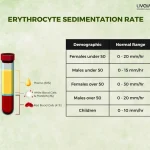This article is reviewed by Dr. K Shankar Rao

The liver is an essential organ that performs several vital functions in the body. It plays a crucial role in filtering toxins from the blood and regulating cholesterol levels. However, if it swells beyond its normal size, a condition known as hepatomegaly, it may indicate an underlying problem (1).
Let’s discuss in detail the causes, symptoms, risk factors and treatment options of hepatomegaly and take the first steps to prevent and manage the condition.
What Is Hepatomegaly (1)?
Hepatomegaly, or enlarged liver, is a condition where the liver swells beyond its normal size. It is usually a symptom of an underlying disease, which may be liver disease, heart disease, or a blood disorder.
Signs and Symptoms of Hepatomegaly (2)
Hepatomegaly may not always produce noticeable symptoms. However, when hepatomegaly is a result of liver disease, it can be accompanied by various signs, such as:
- Abdominal pain in the upper right area of the abdomen
- Fatigue and lack of energy
- Persistent feelings of nausea and vomiting
- Yellowing discolouration of the skin and eyes, also called jaundice
If you experience any of these symptoms, it is recommended to consult a healthcare professional immediately for an accurate diagnosis and appropriate treatment.
Causes of Hepatomegaly (2)
Hepatomegaly, or an enlarged liver, can occur due to various underlying conditions. Here are some of the leading causes of hepatomegaly:
Liver Diseases
- Cirrhosis: Scarring of the liver caused by long-term liver damage from conditions such as chronic alcoholism, hepatitis, or fatty liver disease
- Viral Hepatitis: Infections caused by hepatitis viruses, including hepatitis A, B, and C
- Infectious Mononucleosis: A viral infection that can cause liver inflammation and swelling
- Nonalcoholic Fatty Liver Disease: Accumulation of fat in the liver, often associated with obesity, diabetes, and metabolic syndrome
- Alcoholic Fatty Liver Disease: Excessive alcohol consumption, leading to fat buildup in the liver

Genetic Disorders
- Amyloidosis: An abnormal protein buildup in the liver
- Wilson’s Disease: A genetic disorder that causes copper to accumulate in the liver
- Hemochromatosis: An inherited condition where excess iron accumulates in the liver
- Gaucher’s Disease: A metabolic disorder characterised by the buildup of fatty substances in various organs, including the liver
Other Causes
- Liver Cysts: Fluid-filled pockets that develop in the liver
- Non Cancerous Liver Tumours: Benign growths in the liver, such as hemangioma and adenoma
- Obstruction of the Gallbladder or Bile Ducts: Blockage in the pathways that transport bile from the liver
- Toxic Hepatitis: Liver inflammation and enlargement due to exposure to certain toxins or medications
- Heart and Blood Vessel Problems: Conditions such as heart failure, Budd-Chiari syndrome (blockage of liver-draining veins), or pericarditis (inflammation of the tissue surrounding the heart)
Risk Factors of Hepatomegaly (2)
Several factors can increase the risk of developing hepatomegaly, or an enlarged liver, such as:
- Drinking excessive amounts of alcohol
- Taking larger than recommended doses of medications
- Infectious diseases caused by viruses, bacteria, or parasites
- Hepatitis A, B, and C viruses
- Unhealthy eating habits
Is Hepatomegaly a Dangerous Condition? (1)
An enlarged liver is not itself dangerous. It’s the severity of the underlying disease causing hepatomegaly that tends to determine its potential risk.
At times, your underlying disease may be an acute condition, after which your liver may return to its normal size. Alternatively, it could be a chronic condition leading to gradual and progressive harm. Therefore, it is crucial to diagnose hepatomegaly in its early stages.
Diagnosis of Hepatomegaly (1)
Your healthcare provider will first inquire about your medical history and conduct a thorough physical examination to assess symptoms and signs of liver disease.
They will then ask you to take some blood tests to check liver function, identify markers of liver disease, and detect specific infections or autoimmune conditions that may contribute to hepatomegaly.
They may also prescribe some imaging tests, such as ultrasound, CT scan, or MRI, to visualise the liver’s size and structure and identify any abnormalities or conditions affecting the liver.
In certain cases, a liver biopsy may also be recommended. This involves taking a small sample of liver tissue for analysis in a laboratory and providing detailed information about the liver’s condition and potential causes of hepatomegaly.
Treatment of Hepatomegaly (1)
The treatment of hepatomegaly primarily focuses on addressing the underlying cause and promoting liver health. However, the specific treatment approach will depend on the diagnosed condition.
Treatment options for hepatomegaly usually include:
Lifestyle Changes
Making certain lifestyle modifications, quitting alcohol, losing weight, eating a nutritious and balanced diet, regular exercise, etc., can significantly contribute to the management and potential reversal of hepatomegaly.
Medications
Your healthcare provider may also recommend medications to treat underlying diseases that have caused hepatomegaly.
Surgical Interventions
In certain situations, surgical procedures may be necessary to remove tumours, cysts, or blockages.
Liver Transplant
In severe cases of liver disease where other treatments have not been successful, a liver transplant may be considered. This involves surgically replacing the damaged liver with a healthy liver from a donor.
The Takeaway
Hepatomegaly, or an enlarged liver, is a symptom that indicates an underlying problem. Some of the leading causes of hepatomegaly include liver diseases, genetic disorders and infections.
While hepatomegaly may not always produce noticeable symptoms, when accompanied by liver disease, it can manifest as abdominal pain, fatigue, nausea, vomiting, and jaundice.
It is important to stay aware of these symptoms and consult a healthcare professional if you ever experience them for an accurate diagnosis and treatment.
Disclaimer: The information provided in this article is meant for general awareness and knowledge extension. It is not replace any medical advice. To get any health-related recommendation, please consult your healthcare professionals immediately.

























